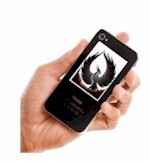|
|


IVR Applications
This section of our technical library presents information and documentation relating to IVR Development and custom IVR software and products.
Business phone systems and toll free answering systems (generally 800 numbers and their equivalent) are very popular for service and sales organizations, allowing customers and prospects to call your organization anywhere in the country.
The PACER and Wizard IVR systems add another dimension to our call center phone systems and solutions.
What Is IVR?. An Interactive Voice Response (IVR) processes inbound phone calls, plays recorded messages including information extracted from databases and the internet, and potentially routes calls to either inhouse service agents or transfers the caller to an outside extension.
The following is an article relating to the IVR market including tips and best practices as well as product and answering service information.
Survey: Voice Systems Still Poorly Designed
Some people don't like robots; some just don't like inefficient robots
By Stephen Bell, Wellington
computerworld.co.nz
New Zealanders and Australians over 45 are less happy about “dealing with a computer rather than a person” when conducting business than their younger compatriots. That does not, however, mean the younger users are satisfied — they’re just grumpy for a different reason.
Many younger customers, while accepting the concept of computer-aided “self-service” technologies such as interactive voice response, still think that most such systems are poorly designed.
The results come from an international survey of business and customer response to such self-service technologies conducted by contact centre vendor Genesys.
Elements of poor design identified in IVR systems include slowness of operation and too many choices on each menu.
“Executives seem to be underestimating customers’ tolerance for call transfers & waiting on hold, rating it less of a frustration than consumers do," the Genesys survey found.
Eighty percent of customers say they would be likely to stop dealing with a company that had a frustrating IVR system.
By comparison, most customers are happy with internet transactions, which are rated more highly than live phone interaction for some applications, such as banking. The internet is the preferred mode for 68% of banking customers, with only 17% preferring to deal with a live agent over the phone (face-to-face transactions were excluded from the survey). Only 9% of respondents prefer IVR for banking.
When it comes to paying bills, the internet preference drops slightly to 64%, and IVR rates lift to 15%, level-pegging with the live agent. The agents come into their own when responding to making bookings or reservations (agents 46%, internet 39%, IVR 3%), product inquiries (47%, against 38% for the internet and zero for IVR) and buying product, where only 15% used the internet for preference, as against 57% preferring a human and zero again for IVR. The remaining customers say the choice would depend on individual factors.
Though internet preference is fairly high, Genesys notes that Australians and New Zealanders rate lower than the overall international sample, which covered 20 countries.
Providers see electronic self-service as increasingly important to their business, though most (59%) tell the surveyors it’s more about customer satisfaction than reducing costs. “While self-service minimises costs, for us it’s very much about what customers are asking for. What was once a luxury is now a necessity — customers are expecting it and demonstrating they want it,” says an unnamed New Zealand company in the media sector.
Speech recognition is a rising element of electronic self-service provision, Genesys says, with 13% of organisations having it already deployed to customers, 2% for internal use and another 30% planning to use it or evaluating the business case. But the majority say they are not currently considering speech recognition (34%) or have decided definitely not to implement it (21%).
|



